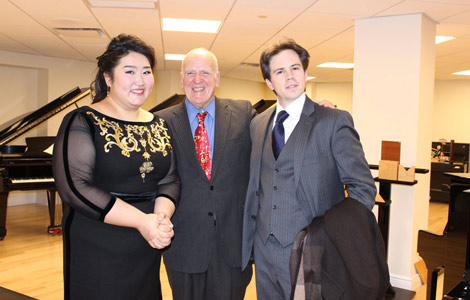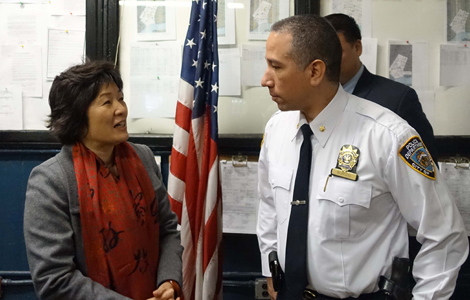Referring petitions to court
Updated: 2014-03-21 07:40
(China Daily)
|
||||||||
The authorities' latest prescription for litigation-related petitions may work better than previous ones, because it represents a serious attempt to have things done within a legal framework. But its efficacy ultimately rests on how well the judiciary works.
The xinfang system, as a supervisory and remedial means to hear public complaints about injustice as a result of misconduct by public institutions and functionaries, is a product of the pre-rule-of-law era.
Rule of law is yet to be an established truth on our soil, but our national laws have formulated such a sophisticated framework that few concerns are beyond coverage. After repeated revisions and amendments, our criminal, civil, and administrative procedure laws have stipulated workable channels for both judicial and administrative redress when injustice occurs.
Therefore, the authorities' plan to put the handling of litigation-related petitions into the hands of the courts is both reasonable and imperative. The question then is how to make it happen.
That people continue to resort to administrative intervention to have perceived wrongs corrected may have multiple reasons.
Our culture has a deep-rooted dislike of the courtroom. Traditionally, people pin their hopes for justice on fair and upright officials, rather than the law. Filing a lawsuit, especially one against someone in power, is usually costly and difficult. And, perhaps more important, judicial corruption has made many doubt the fairness of the outcome.
That some people's distrust of the judiciary is part of the popular social psychology is an extremely dangerous phenomenon, a deputy chief justice of the Supreme People's Court was quoted as saying. It is indeed.
The ongoing national campaign against corruption has ferreted out some wrongdoers within the judiciary, but the housecleaning will have to be deeper and broader. Increasing judicial transparency, in particular, is a proven trust-builder. The practice of publishing court verdicts is an inspiring move in that direction. But it needs to become a universal practice, and such documents should feature more emphasis on the jurisprudential deliberation behind the judgments.
People will have no reason to be incredulous if they can see the justice in each and every court decision. People take their complaints about judicial injustice to administrative authorities not without reason. Statistics indicate that the majority of litigation-related petitions are to do with flaws in judicial proceedings.
Our judiciary must prove its commitment to justice and convince people it is best line of defense.

 Music at her fingers
Music at her fingers
 Across America Over the Week (Jan 16 - Jan 22)
Across America Over the Week (Jan 16 - Jan 22)
 Spend Chinese New Year in style
Spend Chinese New Year in style
 Ili river valley becomes a popular destination for swans
Ili river valley becomes a popular destination for swans
 Philip Ma: from scientist to businessman
Philip Ma: from scientist to businessman
 Birmingham's Spotlight on China dinner
Birmingham's Spotlight on China dinner
 How to distinguish doucai, wucai, Famille-rose and enamel porcelain
How to distinguish doucai, wucai, Famille-rose and enamel porcelain
 Xinjiang lake in bumper fishing season
Xinjiang lake in bumper fishing season
Most Viewed
Editor's Picks

|

|

|

|

|

|
Today's Top News
Houston's SW Chinatown
China to focus on reforms, opening of capital market
Slowdown brings new risks to banks
Trade group calls for BIT
Market status for China is 'political' issue
Birmingham's Spotlight on China dinner
Bank takes renminbi-clearing seriously
Traditional Garb
US Weekly

|

|







